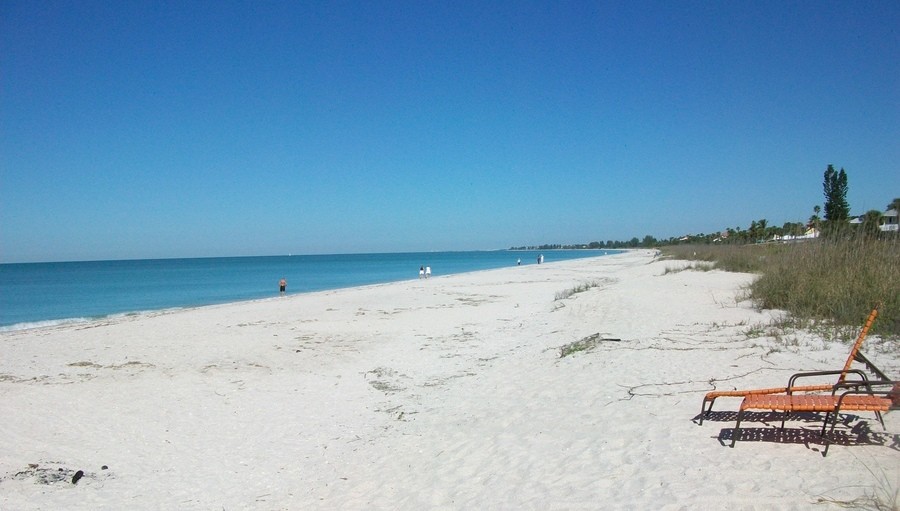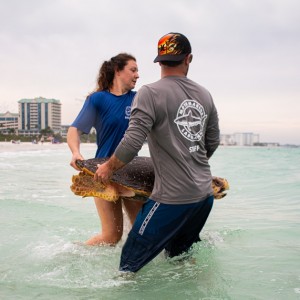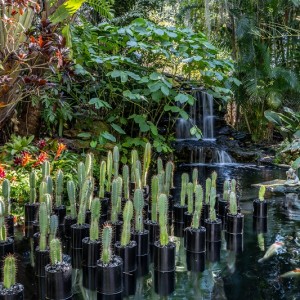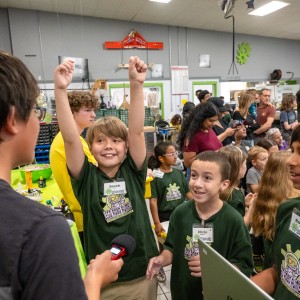Citizens Reclaiming Phillippi Creek
Todays News
SRQ DAILY FRESHLY SQUEEZED CONTENT EVERY MORNING
THURSDAY MAY 25, 2017 |
BY PHILIP LEDERER
It’s Saturday and the sun is shining, but residents are gathering in folding chairs in front of the podium inside South Gate Community Center. A man in the front holds a blown-up photograph of a pair of manatees playing, their lumpy heads nuzzled close. This was taken in his own backyard, he says. But they don’t see the manatees that much anymore. Like many others attending the day’s Reclaiming Phillippi Creek forum, he’s worried about the effects humans have had on the natural waterways and what they can do to bring the manatees back.
Hosted by Florida Water Stewards, a new initiative from the University of Florida’s Institute of Food and Agricultural Sciences (UF/IFAS) Extension and Sustainability, the forum saw concerned community members living along Phillippi Creek and the surrounding waters coming together for a panel of speakers ranging from local government and scientific institutions to real estate mavens and the water stewards themselves. With a mission to inform residents on their multi-faceted relationship with and dependence on Sarasota’s waterways, the speakers took turns elaborating on their personal area of expertise.
Attendees heard about the Phillippi Creek ecosystem and the wildlife that rely on healthy waters from Ryan Schloesser of Mote Marine Laboratory, while Courtney Tarantino of Coldwell Banker offered the human perspective in tying real estate trends and possibilities to the creek’s appearance and performance. Sarasota County Neighborhood Environmental Stewardship Team (NEST) Coordinator Mollie Holland gave a blunt assessment of Phillippi Creek’s current state. “The dynamics of the stream are not what they should be,” she says.
Water concerns include possible build-ups in nitrates and phosphates, as well as bacteria like E. coli and fecal coliform. In a land rich in phosphorus, a bit in the surface water isn’t concerning, she says, but too much leads to algae blooms and unsustainable vegetation that rots into a layer of mucky sludge on the bottom of the creek. Illicit discharges, as they’re called in the parlance, abound, with everything from pesticide and fertilizer runoff contributing, as well as careless yard and animal waste left to wash into the storm water with the rains. A woman from the audience wants to know if they should flush animal waste in the toilet to avoid the problem. It’s an implausible solution, concedes Holland, given some people don’t even pick up pet waste, but the thinking is sound.
Even accepting questions from the audience and leading guests through pop-up graphics and maps, the event was not one of easy solutions and quick fixes, says Robert Wright, a former NEST coordinator who attended as a concerned citizen. Rather, the day was about understanding the interconnectedness of the community, particularly in relation to its aquatic resources, and how everyone has a responsibility. It won't happen in a day, but an educated and attentive populace can restore Phillippi Creek to what it once was. “It’s not what the County does,” says Wright. “It’s what all of us do. It’s how we manage our own yards and properties.” And that’s the only thing that will bring the manatees back.
« View The Thursday May 25, 2017 SRQ Daily Edition
« Back To SRQ Daily Archive










